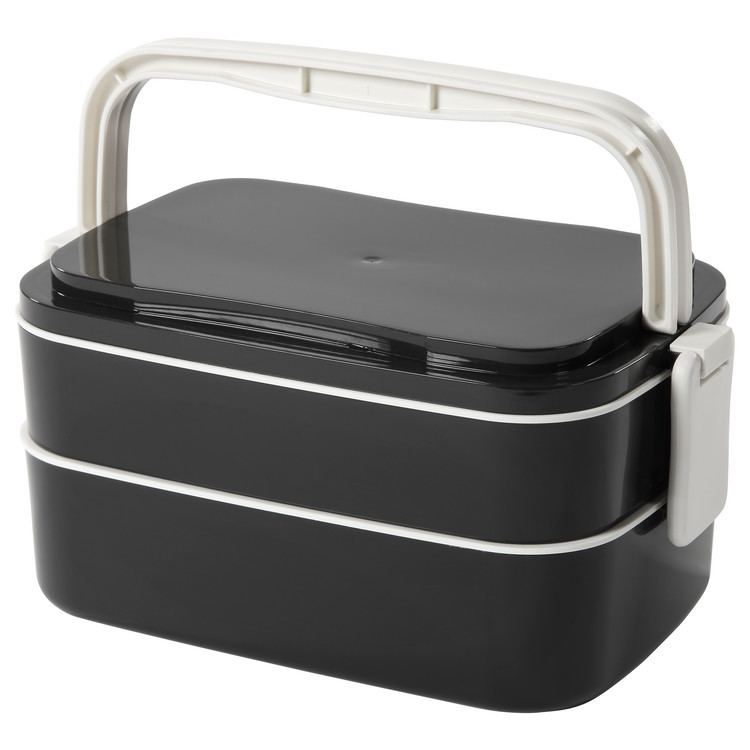 | ||
Eggless double chocolate chips tea time kids lunch box cake priya r magic of indian rasoi
The lunch box, also referred to as a lunch pail or lunch kit, is used to store food to be taken anywhere. The concept of a food container has existed for a long time, but it was not until people began using tobacco tins to carry meals in the early 20th century, followed by the use of lithographed images on metal, that the containers became a staple of youth, and a marketable product.
Contents
- Eggless double chocolate chips tea time kids lunch box cake priya r magic of indian rasoi
- History
- Today
- Legacy
- Health issues
- Political symbolism
- References
The lunch box has most often been used by schoolchildren to take packed lunches, or a snack, from home to school. The most common modern form is a small case with a clasp and handle, often printed with a colorful image that can either be generic or based on children's television shows or films. Use of lithographed metal to produce lunch boxes in the 1950s, 1960s, 1970s and 1980s gave way in the 1990s to use of injection-molded plastic.

A lunch kit comprises the actual "box" and a matching vacuum bottle. However, pop culture has more often embraced the singular term lunch box, which is now most commonly used.

History

With increasing industrialization resulting in Americans working outside the home in factories, it became unfeasible to go home to lunch every day, thus it was necessary to have something to protect and transport a meal. Since the 19th century, American industrial workers have used sturdy containers to hold hardy lunches, consisting of foods such as hard-boiled eggs, vegetables, meat, coffee, and pie. David Shayt, curator of the Smithsonian National Museum of American History, states that “Some of our earliest examples, from the 19th century, were woven baskets with handles. A meal would be wrapped in a handkerchief. Depending on your station, a fancy wooden box would be used by the wealthy.” Tinplate boxes and recycled biscuit tins commonly were used in the early 1800s, and fitted metal pails and boxes began to appear around the 1850s. Patents started to appear for lunchbox inventions in the 1860s.

The Thermos, a vacuum flask adapted for lunch box use, was introduced in 1904. The Thermos, which enabled hot or cold beverages to remain at optimal temperature until lunchtime, became a common component of the lunch box.

Lunch boxes have been manufactured using various materials. Typically, children's school lunch boxes are made of plastic or vinyl, while adult workers' lunch boxes are commonly made of metal, such as tin or aluminium, due to the greater need for durability. The aluminium variant was invented in 1954 by Leo May, a miner in Sudbury, Ontario, after he accidentally crushed his tin lunch box.
In 1935, Geuder, Paeschke and Frey produced the first licensed character lunch box, Mickey Mouse. It was a lithographed oval tin, with a pull-out tray inside. It had no vacuum bottle, but did have a handle.
In 1950, Aladdin Industries created the first children's lunch box based on a television show, Hopalong Cassidy. The Hopalong Cassidy lunch kit, or "Hoppy," quickly became Aladdin’s cash cow. Debuting in time for back-to-school 1950, it would go on to sell 600,000 units in its first year alone, each at a modest $2.39 USD.
While television was experiencing amazing growth during the 1950s, manufacturers saw a potential for sales. Manufacturers grew to include ADCO Liberty, American Thermos (later King Seeley Thermos, or KST), Kruger Manufacturing Company, Landers, Frary and Clark (Universal), Okay Industries, and a number of other producers through the 1980s.
The first use of plastics was the lunch box handle, but later spread to the entire box, with the first molded plastic boxes produced during the 1960s. Vinyl lunch boxes debuted in 1959.
During the 1960s, the lunch box had few changes. The vacuum bottle included in them, however, steadily evolved during the course of the decade and into the 1970s. What was originally a steel vacuum bottle with glass liner, cork or rubber stopper, and bakelite cup became an all-plastic bottle, with insulated foam rather than vacuum. Aladdin produced glass liners into the 1970s, but they were soon replaced with plastic.
In some South American countries, a lunch box is called "lonchera", especially among school children, in clear assimilation of the English word "lunch".
Today
Today, lunch boxes are generally made of plastic, with foam insulation, and an aluminum/vinyl interior. As a result, they’re usually much better at retaining their temperature but are less rigid/protective.
Lunch box collecting is a popular hobby. Many lunch boxes, including those from the 1950s and 1960s, sometimes even sell into the dozens of dollars.
Legacy
Health issues
Health concerns came to light in August 2002, when the Center for Environmental Health discovered that many popular vinyl lunch boxes contained dangerously high levels of lead. Many, though not all, were pulled from the shelves.
In 2001, most major manufacturers began testing their lunch boxes for lead levels, remedied the issue, and labeled their boxes as lead free.
Political symbolism
In the United States, the lunch box or lunch pail has been used as a symbol of the working class. The phrase 'lunch pail Democrat' is used to classify populist politicians who attempt to gain the votes of the working class.
